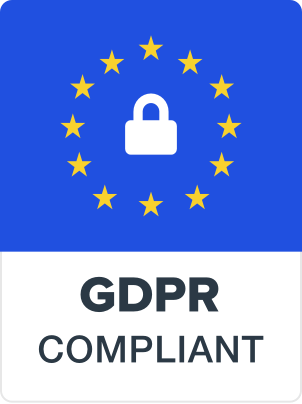Follow These 4 Important Resources to Write a Good Audit Report

December 15 , 2022
Do you want to know how to create a successful audit report that can inspire action from stakeholders and is easy to read? With our reporting materials package’s tried-and-true strategies for improving clarity and business effect, you can elevate your upcoming audit report. According to Statista, with a share of 10.35 percent of active apps, the second-most popular category are business apps.
What Makes An Excellent Audit Report?

A strong internal audit report is one that effectively conveys the goals, parameters, and conclusions of an audit engagement and inspires its audience to follow internal audit’s suggested actions.
What Belongs In A Report On An Audit?
When learning how to produce a decent audit report, content is important. Based on The IIA Standard 2410 – Criteria for Communications, we have a grasp of what an audit report contains. What the report must and should contain is specified in the internal auditing standards. Audit reports have a common format that most internal auditors adhere to because we all use the same auditing standards. The following components of the business forms templates are typically present;
- Objectives and the scope (must)
- Results (must) (must)
- Action plans and suggestions (must)
- Conclusions (must) (must)
- Opinion (should) (should)
- Recognition of successful performance (encouraged)
How Do You Compose An Effective Audit Report?

An excellent internal audit report sends the reader a clear message. Reviewing The IIA Standard 2410 reveals that communication—rather than reporting—is the focus of the advice. If we are creating a report as a communication tool, it should be objective and presented in an engaging manner rather than in an accusatory one. Audit reports should be succinct and direct. “The length of the audit report, if one is even needed, should be just enough to tell the consumers of the report what they need to know – and no more,” Norman Marks once said.
Four best resources for writing an effective smart report have been compiled from UrAudits:
Four Points to Consider When Writing an Executive Summary
Making sure the report’s authors are aware of the desired outcome is the first step in creating a fantastic audit report. An audit report must inspire leadership to implement internal audit’s recommendations in order to have an effect on the organisation.
-
Recognize Your Readers

Recognize who will be receiving the report. It is crucial to comprehend the culture of your company because the executive summary should provide an outline of the comprehensive report that appeals to every executive officer who reads it. While some businesses may value compliance more than cross-functional collaboration, others could. There won’t be a technical subject matter specialist among every stakeholder.
-
Remove the Fuzz
A page or two should make up the executive summary. There will be more takeaways in the complete report, so think about the best approach to summarise each topic. Use figures and percentages to help illustrate your points whenever possible. Remove any extraneous adjectives and adverbs of description.
-
Inform the Company of It
The executive summary should be prepared so that everyone can readily grasp the language and sophistication level of the text, whether the audit report is provided to members from operations or IT. Try to make every argument understandable to employees with all levels of experience and skill at your organisation.
-
Make It Comprehensible

Bring the reader’s attention to the information as succinctly as you can for any important point, whether it is a significant, reassuring finding or a favourable one. Utilize visual layout to direct your audience’s attention to each of your most crucial takeaways or messages.
10 Guidelines for Writing a Clear Audit Report
-
Consider Everything
Avoid making assertions that cannot be verified, and be sure to fill up any informational gaps by citing the sources of important data.
-
Include a Reference Section

Use indices, appendices, and tables in this section is quite beneficial.
-
Make Use of Illustrations, Graphics, and Text Styling
If you can quantify a fact or explain it with a percentage, do so. To attract attention to important facts and numbers, bold, italicise, underline, or circle them if you want to emphasise them. Wherever possible, use tables or graphs to summarise and highlight important patterns or data.
-
Note Important Data Regarding the Audited Entity
Setting things in perspective and providing context and significance to your audit findings is accomplished by including essential facts about the entity being audited in the Background/Overview, if appropriate.
-
Make a “Findings Sandwich”
Place a positive finding first, then an issue, then another positive, and so on. Make an effort to close the Findings Summary on a happy note.
-
Ensure That Each Issue Contains the Five Components of Observations
Criteria, Situation, Cause, Result, and Recommendations for Corrective Action.
-
Add Extensive Observations
Any additional information should also be included in the detailed observations.
-
Consistently Conduct a Quality Assurance Check
Find someone who isn’t directly involved with the audit so they can offer other perspectives. Ask someone from the department or function that was audited to evaluate the report as well, if at all possible.
-
Don’t Assign Blame; Just State the Facts
By remaining as impartial and blame-free as you can, try to maintain the relationship with audit clients. Justify problems and suggested solutions.
-
Try To Be As Direct As You Can
Make strong recommendations and calls to action rather than subtle recommendations (such as “Management should consider”)
Conclusion
Implement our audit checklist and workflow monitoring system on how to create a good audit report to ensure that it effectively conveys the objectives, scope, and results of an audit engagement and, in doing so, inspires its readers to follow internal audit’s suggested actions. Doing so will elevate your next audit report. If you are looking for professional report templates and auditing app, get in touch with UrAudits.
Copyright © 2024 Uraudits.com. All Rights Reserved. Privacy Policy | Legal | Terms of Use
Privacy Overview
| Cookie | Duration | Description |
|---|---|---|
| cookielawinfo-checbox-analytics | 11 months | This cookie is set by GDPR Cookie Consent plugin. The cookie is used to store the user consent for the cookies in the category "Analytics". |
| cookielawinfo-checbox-functional | 11 months | The cookie is set by GDPR cookie consent to record the user consent for the cookies in the category "Functional". |
| cookielawinfo-checbox-others | 11 months | This cookie is set by GDPR Cookie Consent plugin. The cookie is used to store the user consent for the cookies in the category "Other. |
| cookielawinfo-checkbox-necessary | 11 months | This cookie is set by GDPR Cookie Consent plugin. The cookies is used to store the user consent for the cookies in the category "Necessary". |
| cookielawinfo-checkbox-performance | 11 months | This cookie is set by GDPR Cookie Consent plugin. The cookie is used to store the user consent for the cookies in the category "Performance". |
| viewed_cookie_policy | 11 months | The cookie is set by the GDPR Cookie Consent plugin and is used to store whether or not user has consented to the use of cookies. It does not store any personal data. |









